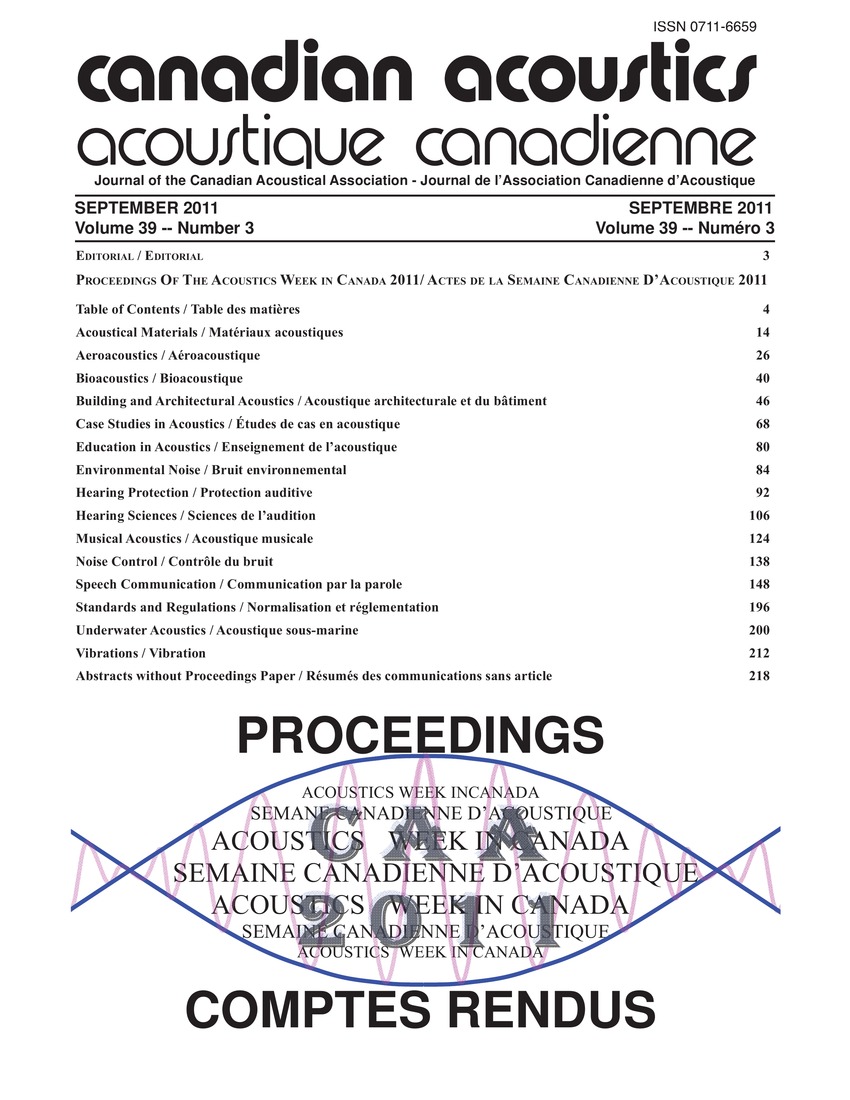Noise control of variable speed drive fans: A case study
Keywords:
Electric locomotives, Electric motors, Enclosures, Anecdotal evidences, Building exhausts, Electrical power, Electromagnetic resonance, Fan speed, High frequency components, Low noise, National Research Council, Noise measurementsAbstract
Variable Speed Drive (VSD) motors allow building exhaust systems to operate more efficiently. It also, in principle, should lead to less noise due to a general reduction in fan speeds. Therefore, the National Research Council replaced old rooftop fans at one of its facilities, with fans selected for low-noise characteristics and equipped with VSD electric motors. Noise measurements were made on the roof of the building, at a distance of 5 m, with all three fans operating simultaneously and under identical controller conditions. The fitting of the acoustic absorptive lining was early in the investigation and not well documented. Anecdotal evidence comparing noise from the fans with lined enclosures to those with unlined enclosures, suggests that the differences were small and insignificant. A characteristic of this type of VSD controller is that noise is generated when high frequency components in the electrical power to the motor cause electromagnetic resonances in the stator of the electric motor.Additional Files
Published
How to Cite
Issue
Section
License
Author Licensing Addendum
This Licensing Addendum ("Addendum") is entered into between the undersigned Author(s) and Canadian Acoustics journal published by the Canadian Acoustical Association (hereinafter referred to as the "Publisher"). The Author(s) and the Publisher agree as follows:
-
Retained Rights: The Author(s) retain(s) the following rights:
- The right to reproduce, distribute, and publicly display the Work on the Author's personal website or the website of the Author's institution.
- The right to use the Work in the Author's teaching activities and presentations.
- The right to include the Work in a compilation for the Author's personal use, not for sale.
-
Grant of License: The Author(s) grant(s) to the Publisher a worldwide exclusive license to publish, reproduce, distribute, and display the Work in Canadian Acoustics and any other formats and media deemed appropriate by the Publisher.
-
Attribution: The Publisher agrees to include proper attribution to the Author(s) in all publications and reproductions of the Work.
-
No Conflict: This Addendum is intended to be in harmony with, and not in conflict with, the terms and conditions of the original agreement entered into between the Author(s) and the Publisher.
-
Copyright Clause: Copyright on articles is held by the Author(s). The corresponding Author has the right to grant on behalf of all Authors and does grant on behalf of all Authors, a worldwide exclusive license to the Publisher and its licensees in perpetuity, in all forms, formats, and media (whether known now or created in the future), including but not limited to the rights to publish, reproduce, distribute, display, store, translate, create adaptations, reprints, include within collections, and create summaries, extracts, and/or abstracts of the Contribution.


